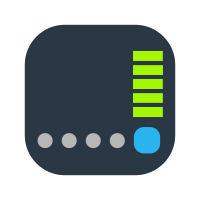Last edited:
After originally using 3rd party community packages when I first got my nas I’ve moved to docker and think it’s great. Just after a bit of advice from someone with more experience though please.
I’ve been using docker for quite a bit now so I’m comfortable with deploying containers and basic troubleshooting. To date I have just used the built in synology UI but I’m now having some odd issues.
im running a swag container from linuxserver to allow external access to my containers and this works great. Just started to have an odd issue though where I can‘t deploy this via the synology docker UI as it complains the ports needed are already in use. Net stat shows the ports aren’t in use as i run a script at boot to free up 443 and 80. Oddly I can start the container from within portainer fine but it then doesnt show in the docker UI. Ive also run docker container ls -a and aside from swag nothing is using those ports. Just looks like something in the docker UI isn’t quite upto date. Any ideas how I can fix that?
Second query which may actually negate the need for an answer to the first is should I move to docker compose instead of using the UI. I’ve seen a fair bit about this and have started to search for containers to extract the docker compose from a running container. What benefits does docker compose bring and whats the best way to switch over to using that?
Last question (and thanks if you’re still reading this), what’s the best way to back up all my docker setup? I have all containers using config folders on my NAS so I can save all of those, if I did move to docker compose would I then just need to save that compose script and that’s pretty much a full backup?
Cheers, any advice appreciated.
After writing this I decided to have a look round the forum and found someone recommending the following
sudo synoservice --restart pkgctl-Docker
Thats sorted my first query, swag is now there in the docker UI. I’d restarted my nas a few times and killed the docker package and restarted but that command has now done the trick.
if anyone had any advice on docker compose and backups that would be great. Thanks
I’ve been using docker for quite a bit now so I’m comfortable with deploying containers and basic troubleshooting. To date I have just used the built in synology UI but I’m now having some odd issues.
im running a swag container from linuxserver to allow external access to my containers and this works great. Just started to have an odd issue though where I can‘t deploy this via the synology docker UI as it complains the ports needed are already in use. Net stat shows the ports aren’t in use as i run a script at boot to free up 443 and 80. Oddly I can start the container from within portainer fine but it then doesnt show in the docker UI. Ive also run docker container ls -a and aside from swag nothing is using those ports. Just looks like something in the docker UI isn’t quite upto date. Any ideas how I can fix that?
Second query which may actually negate the need for an answer to the first is should I move to docker compose instead of using the UI. I’ve seen a fair bit about this and have started to search for containers to extract the docker compose from a running container. What benefits does docker compose bring and whats the best way to switch over to using that?
Last question (and thanks if you’re still reading this), what’s the best way to back up all my docker setup? I have all containers using config folders on my NAS so I can save all of those, if I did move to docker compose would I then just need to save that compose script and that’s pretty much a full backup?
Cheers, any advice appreciated.
-- post merged: --
After writing this I decided to have a look round the forum and found someone recommending the following
sudo synoservice --restart pkgctl-Docker
Thats sorted my first query, swag is now there in the docker UI. I’d restarted my nas a few times and killed the docker package and restarted but that command has now done the trick.
if anyone had any advice on docker compose and backups that would be great. Thanks



